Do you want to learn about Destroying Angel Mushrooms in North Dakota?
Finding a guide to Destroying Angel Mushrooms in North Dakota was not as easy as I thought. Some are irrelevant, some are too short, and some don’t provide the information I was seeking.
That’s why I created a list of the Destroying Angel Mushrooms in North Dakota!
This ultimate guide will give you not only information about Destroying Angel Mushrooms, but other deadly North Dakota mushrooms.
Read THIS Before Identifying the Most Poisonous Mushrooms in North Dakota
Knowing the type of mushroom growing in your yard can be the difference between a fascinating hobby that can result in a nutritious and edible food source and a deadly toxin. Always make sure to work with your local city and gardening club before eating mushrooms found in the wild.
It is important to pay close attention to the following when picking or eliminating mushrooms in your yard:
- The size, including the cap, gills, scales, spores, and stem.
- The color, including the cap, gills, scales, spores, and stem.
- Location, both in the United States and in your yard
- Odor and even taste
And if you want to learn more about poisonous mushrooms that grow in your yard watch the below video!
10 Most Poisonous Mushrooms in North Dakota (including Destroying Angel Mushrooms)
#1. False Morel Mushroom (Gyromitra esculenta)
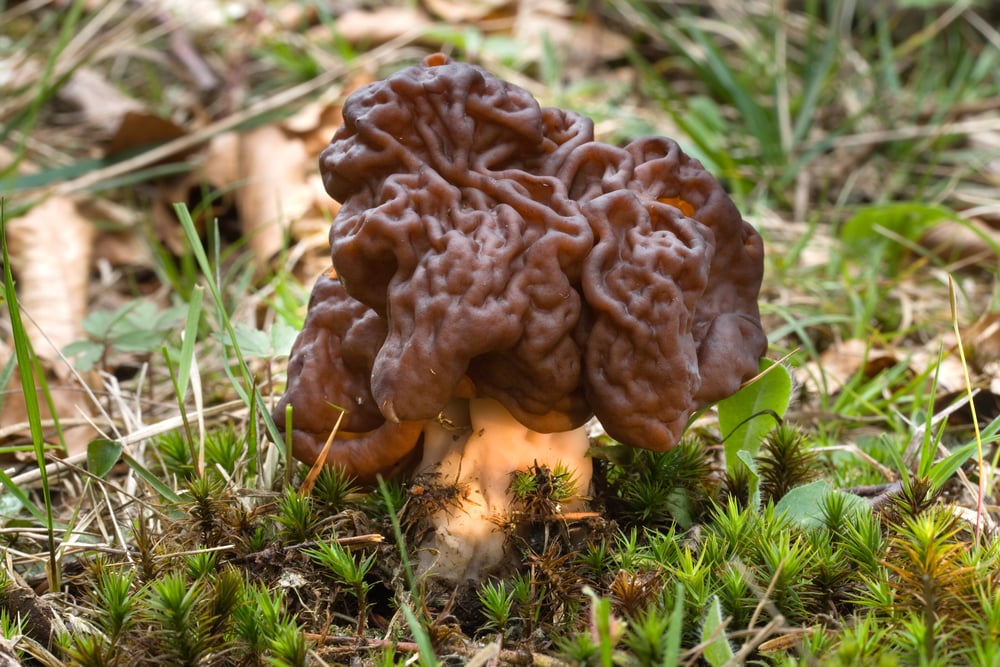

Specifications:
- The False Morel Mushroom has a red-brown cap, yellowish spores, broad red-brown gills, and thick, cluster stalks.
- This type of mushroom grows from early spring to summer throughout the United States, including North Dakota.
- It is important to kill these mushrooms when you see them as they are not only toxic to humans, but they will slowly destroy the land in woodlands and mountainous areas.
- This mushroom should be not consumed. This mushroom can be confused with its edible cousin the Morel. It should be noted if consumed in small amounts you will have extreme stomach conditions and if consumed in large amounts the effects are lethal.
- An interesting fact is that false morels in North Dakota and North America are less poisonous than in Europe and other parts of the world. And while some people mistake this for its edible cousin, much has been learned over the years reducing poisoning and accidents over the years.
#2. Liberty Cap Mushroom (Psilocybe semilanceata)
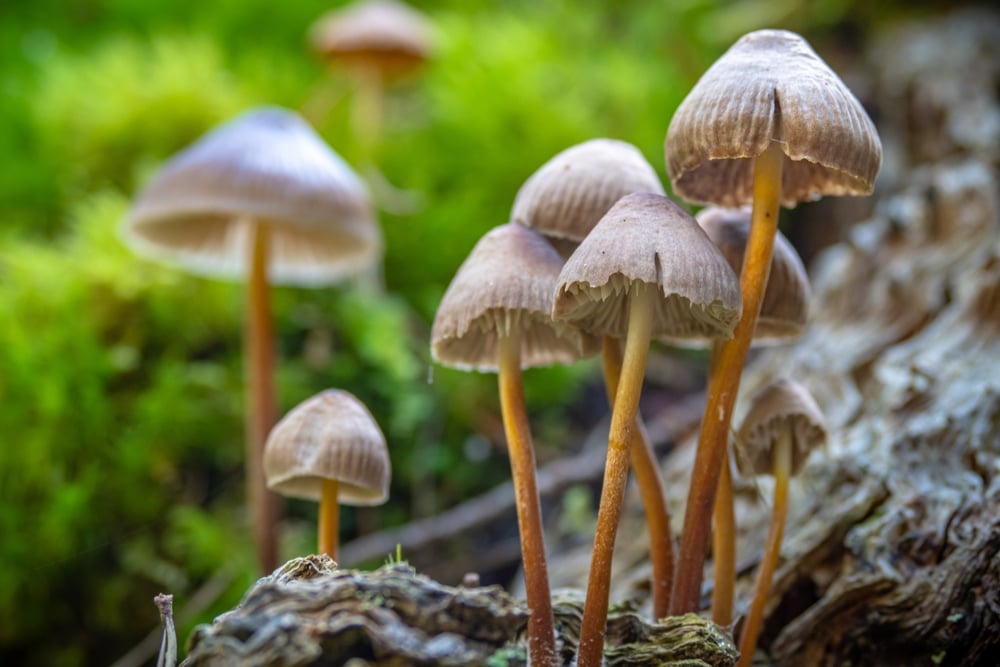

Specifications:
- The Liberty Cap Mushroom has a cream cap, purple spores, thin cream and brown stalks, and cream gills.
- This type of mushroom grows from summer and fall throughout the world, including North Dakota, Ireland, and Wales. It is one of the most common poisonous mushrooms you will find on your lawn, farms, and rolling hills.
- You should immediately destroy these mushrooms if seen. Not only are they toxic to humans and animals, but they can wreak havoc on trees and other plants in the area.
- This mushroom should not be consumed. While some people experience hallucinogens, others will experience vomiting, intense stomach pains, and anxiety attacks.
- What makes these mushrooms so poisonous is that they can be mistaken for non-lethal mushrooms that look similar, but have subtle differences in the features of the cap and gills.
#3. Fly Agaric Mushrooms (Amanita muscaria)
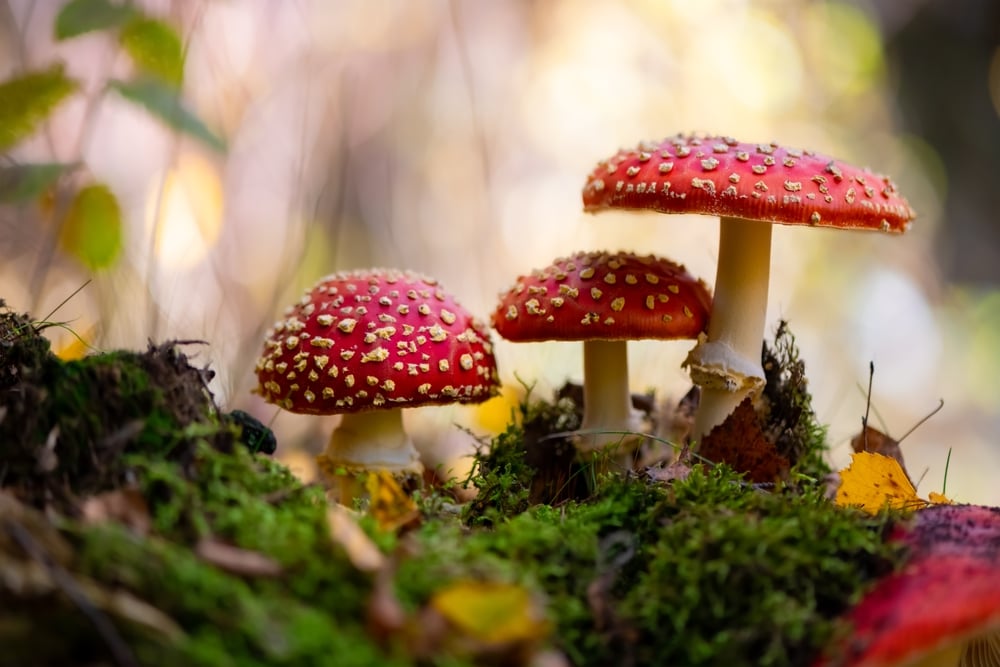

Specifications:
- The Fly Agaric Mushroom has a deep red and orange cap, white spores, narrow white stalks, and white to pale yellow gills.
- This type of mushroom grows from late summer to late fall throughout the world, including United States, Ireland, and Britain. This mushroom should not be consumed. If you do consume it, it should be raw and will cause hallucinations.
- You should kill these mushrooms unless you want them to be a natural pesticide or herbicide in your yard. This mushroom is common in North Dakota and will grow on hardwood, including spruce, birch, and pine trees.
- This mushroom should not be consumed. If you decide to eat the mushroom, it should be consumed raw. When consumed, you should expect hallucinations, drowsiness, etc.
- The Fly Agaric Mushroom is the type of mushroom you will typically see and read about in fairy tales and will even see in fairy gardens across the world.
#4. Banded Mottelgill (Panaeolina foenisecii)
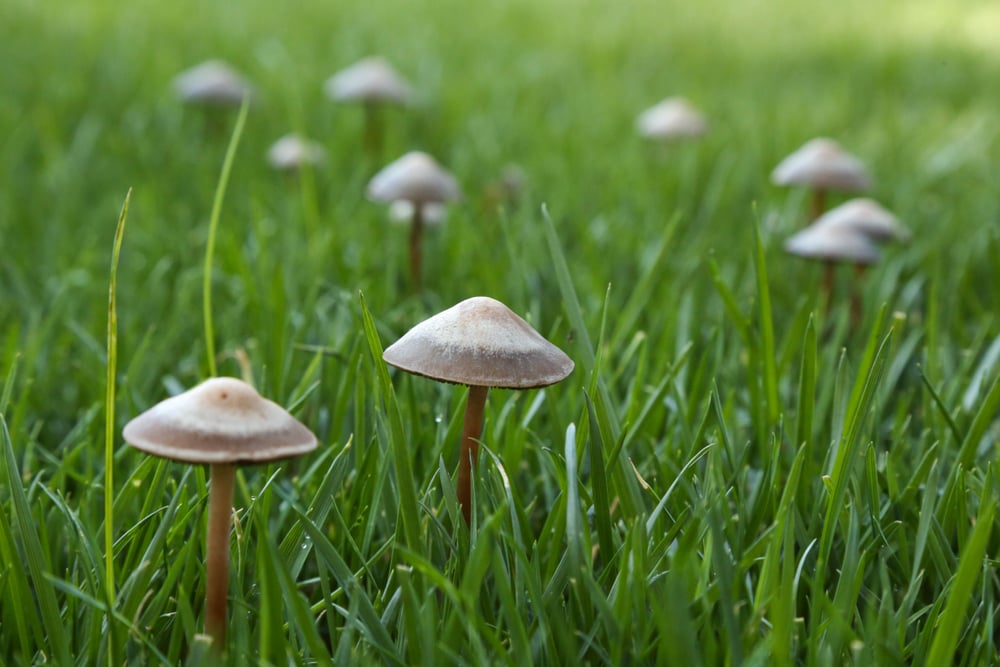

Specifications:
- The Banded Mottlegill has a white and beige cap, white spores, thin white or beige cream stalks, and beige/brown gills.
- This type of mushroom grows from spring to winter in the United States. While it can also be found in Ireland and Great Britain, it is much rarer. The Banded Mottlegill Mushroom is one of the most common poisonous yard mushrooms that should not be eaten.
- You should destroy the Banded Mottlegill mushroom in your yard. These are very dangerous to humans and animals and can hurt trees, plants, and grass around them.
- This mushroom should be not consumed! It can be lethal in children and can cause psychotic experiences in children and adults who eat them.
- This is one of the few mushrooms on the list that scientists still have not determined all of the negative toxic effects that can happen from consuming it and we are still learning much about this poisonous yard mushroom.
#5. Haymaker Mushroom (Panaeolus foenisecii)
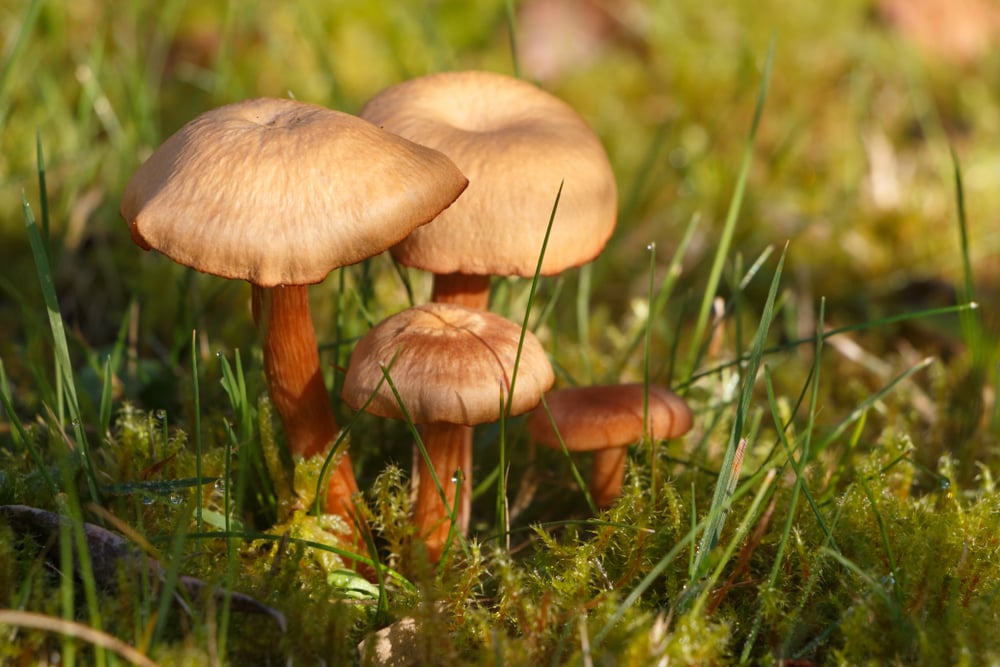

Specifications:
- The Haymaker Mushroom has a Brown cap, white spores, thin, small brown stalks, and brown gills.
- This type of mushroom grows from spring to early winter in North Dakota and the United States. It can also be found throughout the Northern Hemisphere of the world. Most humans and animals will not eat mushrooms.
- The Haymaker Mushroom is the most common poisonous yard mushroom in North Dakota. You can expect it whether you mow or fertilize your law. While it is not a parasite to your lawn or plants, it should be removed so that it isn’t foraged by children. You will find this mushroom in grassy areas!
- This mushroom should not be consumed! Children can become extremely ill if they eat it and adults can experience hallucinations and stomach aches.
- The Haymaker’s Mushroom is also known as the Mower’s Mushroom as this is a common yard mushroom seen when mowing or tending to one’s lawn.
#6. Jack O Lantern Mushroom (Omphalotus olearius)


Specifications:
- The Jack O Lantern Mushroom has an Orange and Yellow cap, white spores, thick, orange and dark yellow stalks, and dark orange gills.
- This type of mushroom grows from early fall to winter in the United States, Ireland, Britain, and Southern Europe. No one or no animal will typically consume this type of mushroom.
- The Jack O Lantern Mushroom can be found in North Dakota, the United States, and throughout Southern Europe. You will find it under trees in shaded areas, but should not be foraged.
- This mushroom should not be consumed! It can cause stomach pain for several days and while not fatal it is incredibly toxic.
- There are other types of similar mushroom species to the Jack O Lantern Mushroom that will grow in Europe. Regardless of the specific type, they have similar characteristics and should be treated the same way.
#7. Destroying Angel Mushroom (Amanita virosa)
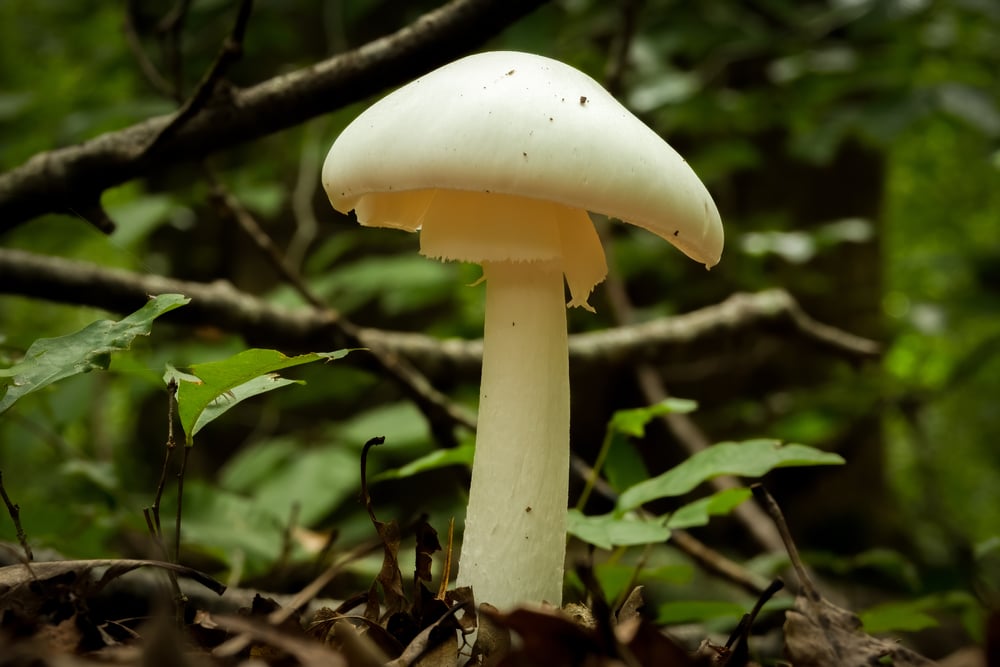

Specifications:
- The Destroying Angel Mushroom has a white cap, white spores, tall and thick white stems, , and white gills.
- This type of mushroom grows from summer to fall in the United States, Ireland, and Britain. No one or no animal will typically consume this type of mushroom as it is the deadliest common yard mushroom on the planet.
- The Destroying Angel Mushroom can be found in yards in North Dakota and the United States. You will find it in grassy areas on the edge of wooded areas.
- This mushroom should not be consumed! It is the deadliest mushroom on the planet and can cause organ failure and even death within hours.
- The Destroying Angel Mushroom is one of the most misidentified mushrooms by novice mushroom foragers. You should take extra precautions when foraging mushrooms in your yard.
#8. Deadly Galerina Mushroom (Galerina marginata)
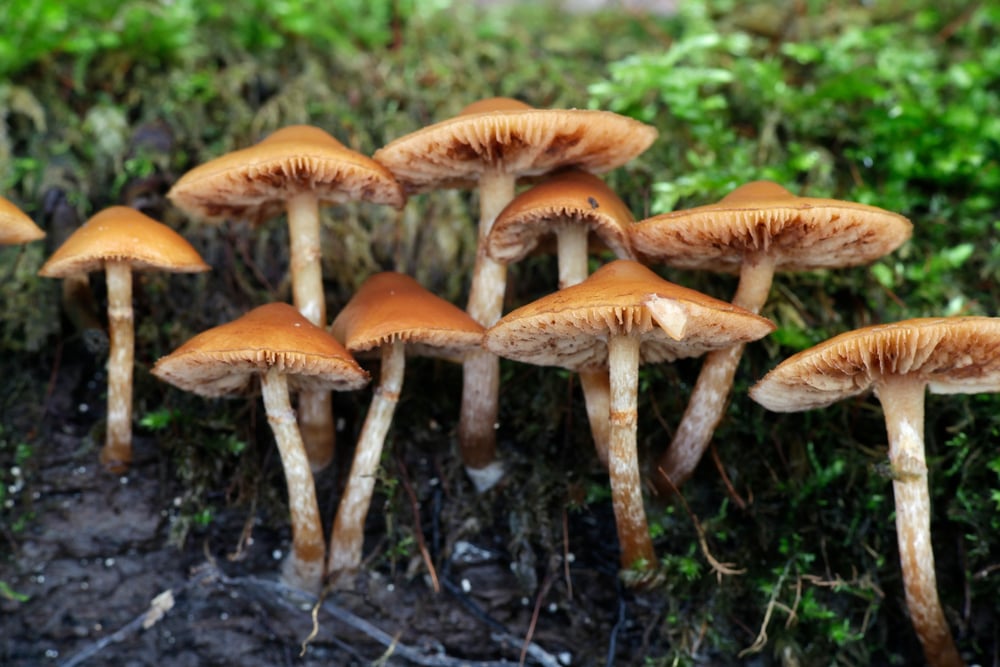

Specifications:
- The Funeral Bell Mushroom has a honey yellow and brown cap, brown spores, tall and thick brown stems, cream gills.
- This type of mushroom grows from summer to fall in the United States, Ireland, and Britain. No one or no animal will typically consume this type of mushroom as it is considered a deadly yard mushroom.
- The Funeral Bell Mushroom can be found in yards in North Dakota and the United States. You will find them in Stumps, Dead Trees, Broken Branches, and sometimes even dead leaves in the fall.
- This mushroom should not be consumed! It contains the same deadly toxins as the Destroying Angel mushroom and can result in organ failure and death within a day.
- It should be noted that even though the Funeral Bell Mushroom typically grows in the summer and fall in North Dakota, in some parts of the United States it can grow any time of the year!
#9. False Parasol (Chlorophyllum rhacodes)
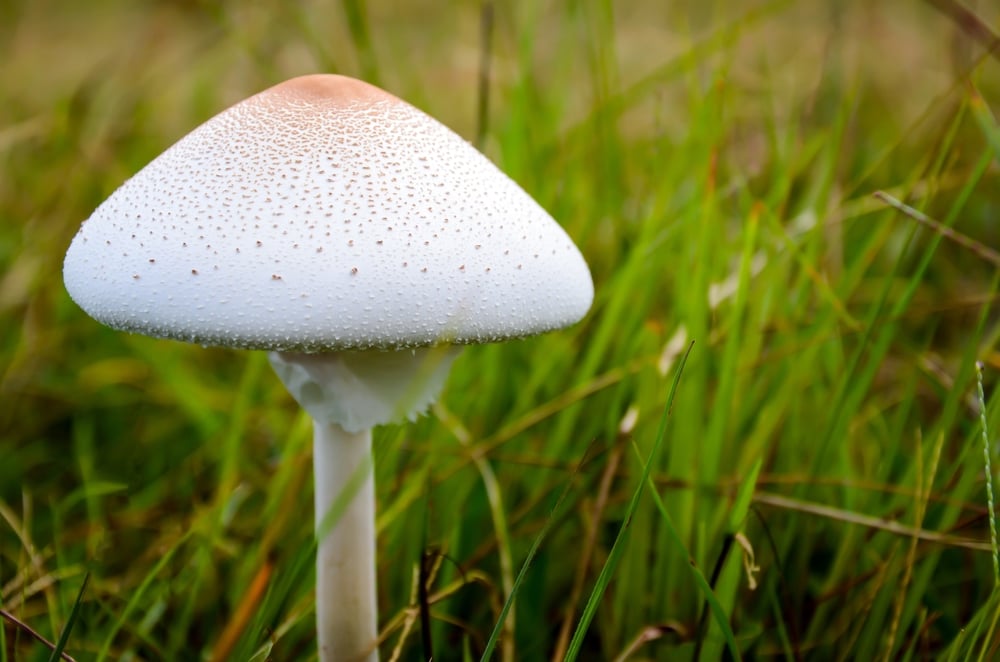

Specifications:
- The False Parasol Mushroom has a white and cream cap, white spores, tall and thick white and cream stems, and cream gills.
- This type of mushroom grows from summer to fall in the United States, Ireland, and Britain. No one or no animal will typically consume this type of mushroom as it is considered a deadly yard mushroom.
- The False Parasol Mushroom can be found in yards in North Dakota and the United States. You will find them in Woodland Areas and also in Humous-Rich Soil in Gardens.
- This mushroom should not be consumed! Although some may consider this an edible mushroom, experts have agreed this can make people incredibly ill.
- The False Parasol Mushroom is another mythical mushroom that can be found in European folklore and is known for its connection with fairies and fairy rings.
#10. Deadly Webcap (Cortinarius rubellus)
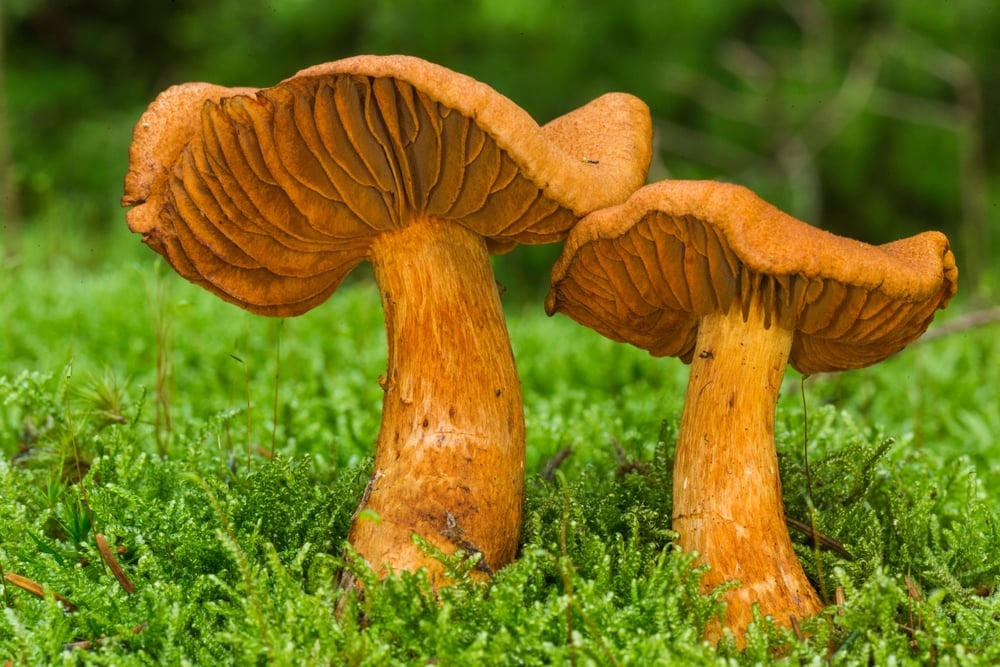

Specifications:
- The Deadly Webcap Mushroom has a tawny brown cap, brown spores, tall and thick yellow stems, and tawny brown gills.
- This type of mushroom grows from summer to winter in the United States, Ireland, and Britain. No one or no animal will typically consume this type of mushroom as it is considered a deadly yard mushroom.
- The Deadly Webcap Mushroom can be found in yards in North Dakota and the United States. You will find them under pine and spruce trees and in damp soil.
- This mushroom should not be consumed! Even the smallest bite of this mushroom will cause kidney and liver failure and can even cause death.
- If ingested you will notice flu-like symptoms in the first three days. This should not be confused with the actual flu and you should immediately seek medical attention.
Common Factors of the Most Common Poisonous Mushrooms (Including Destroying Angel Mushrooms)

As a reminder, the below factors are common for the most poisonous mushrooms
- Most are parasitic to humans and should not be consumed.
- These mushrooms can be found throughout your yard, but most commonly on trees and in wet areas of your yard.
- Each mushroom on this list has a common fungus relative that it can be mistaken for. Leverage this guide to have the best chance of identifying common yard mushrooms in North Dakota.
- Most mushrooms on this list will only grow a maximum height of 6 inches tall and 3 or 4 inches wide.
- A majority of the mushrooms on this list will have no smell to them.
And remember that you should pay attention to this guide, other local experts, and your local mushroom clubs before foraging. This can be the difference between a nutritious and delicious mushroom and a harmful and even deadly fungus.
If you want to learn about other mushrooms, chickens, vegetables, fruits, herbs, and bees check out thegardeningdad and search for the plant you want to grow in the upper right-hand corner.